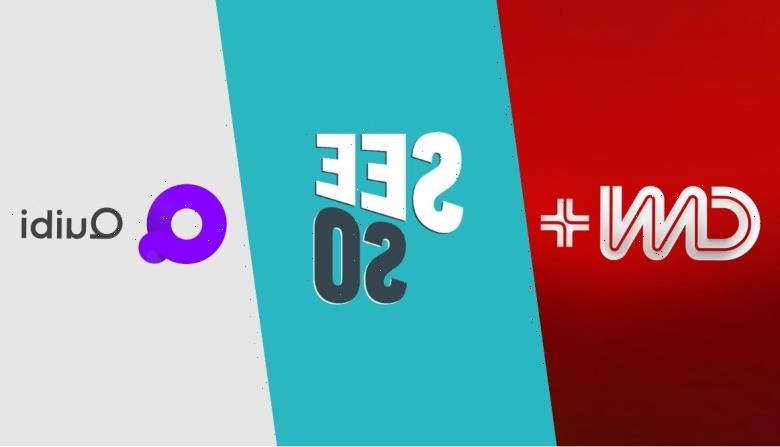Peacock predecessor Seeso, an NBCUniversal streaming platform focused exclusively on comedy, was a total bust that lasted from January 2016 to November 2017 — just 18 months. Or as we’ll refer to that time period today: twice as long as CNN+ and Quibi’s lifetimes combined.
Evan Shapiro, the former head of Seeso who’s now an adjunct professor at the business schools of Fordham and NYU Stern, told IndieWire on Friday the lone connection he sees between Seeso and the newly flopped CNN+ is — and we’re definitely quoting here — “Corporate media be whack, yo.”
“In both cases, the companies went all in on something — all in — and something changed,” he added.
In the case of CNN+, which made it all of three weeks before new leadership announced it was being scrapped, the “something” that changed was the WarnerMedia-Discovery merger. Warner Bros. Discovery chief David Zaslav never wanted CNN to launch an SVOD service, though he could not be very vocal about that – and certainly couldn’t stop it – during the pending merger’s regulatory quiet period. So (people who would soon no longer work at) CNN launched it anyway, just 10 days before the breaking-news brand became part of Zaslav’s media empire. Less than two weeks later, Zaslav put CNN+ out of its misery.
If that doesn’t emphasize just how short-lived CNN+ was, perhaps this will: CNN+ didn’t even make it through its own four-week promotional sign-up period, which slashed the regular monthly price of $5.99 to $2.99 for life. Turns out it was an incredibly brief life.
Six years earlier, the Seeso “something” was, in Shapiro’s eyes, “a disbelief that where we are now was coming.” He said Comcast/NBCU execs lacked the foresight while linear television was already losing ground to subscription streaming. Of course, given the week SVOD had, which included disastrous Q1 results for Netflix, perhaps those pessimistic Seeso overseers were more prescient than Shapiro gives credit.
That doesn’t make Shapiro wrong: Seeso was ahead of its time. It may not have been well-planned, -named, or -executed, but the Seeso model was on the money. “I fall victim to a number of different things, but most notably I’m very often 15 minutes early to the party,” Shapiro told us.
The plan was for Seeso to become Peacock, essentially (and eventually). “We started with comedy and then we were supposed to do other verticals until we became Peacock,” Shapiro said. But there was a money problem: It lacked both corporate investment and subscription revenue. Shapiro estimates Seeso had “like 15 percent” the financial backing of a CNN+ or a Quibi. Without seed money from NBCU, Seeso also didn’t have the must-see originals that might command $3.99 per month from subscribers at a time when “streaming” mostly just meant “Netflix” to many.
For contractual reasons, the CNN-branded pay-streaming service could not provide any access to CNN linear programs. CNN makes $1 billion each year in cable carriage fees so fair enough, but that also made CNN+ sound like a terrible idea to us from the get-go. In the eyes of the Seeso architect, could it have worked? Shapiro hedged, calling the CNN+ case study “a tweener.” By that, he means it might have worked if given the proper support, or perhaps it was doomed from the conceptual stage. An unsatisfying answer, sure, but after less than one month who could know for certain?
Despite acknowledging that CNN+ should have never gotten the funds it did amidst AT&T’s spinoff of WarnerMedia, Shapiro still sees CNN as Warner Bros. Discovery’s “most valuable asset.” He’s not especially concerned with how CNN Digital, sans the plus mark, fits in with the newly formed company’s surviving streaming services, HBO Max and Discovery+, which are set to undergo a merger of their own. Shapiro is not even sure HBO Max and Discovery+ can — or should — co-exist.
With the male demo attracted to prestige scripted at Max and women going for the not-prestige unscripted at Discovery, the brands lack synergy. Perhaps more concerning is almost no HBO Max subscribers select its ad-supported option, Shapiro worried, while most Discovery+ users choose the cheaper subscription option with commercials. It’s the same ways people are used to watching linear HBO and Discovery’s cable channels. Also, HBO recently removed itself from Amazon channels — that directly conflicts the Discovery+ statistic that one-third of its subscribers come from Amazon channels.
Shapiro admits he feels vindicated by the epic streaming fails post-Seeso. He’s not surprised, though. The corporate structure that sank the S.S. Seeso is also repeating its mistakes. Just as radio didn’t take TV seriously ahead of the ’50s, linear laughing off streaming, and even Netflix being averse to ads, no one is learning the lessons, Shapiro says.
“It evolves way too slowly,” he said of that “whack” corporate-media landscape. “And it always has.”
Source: Read Full Article
